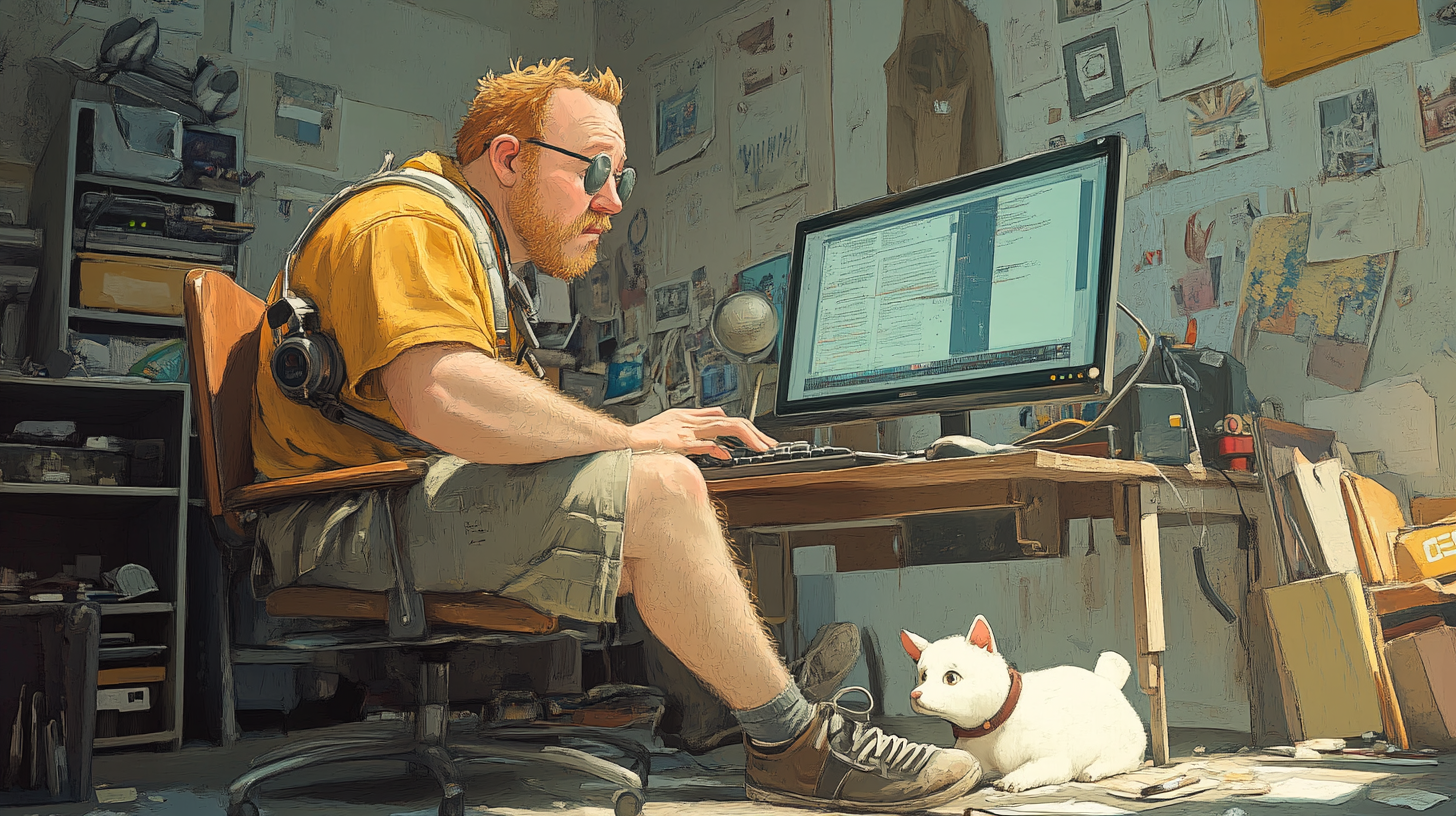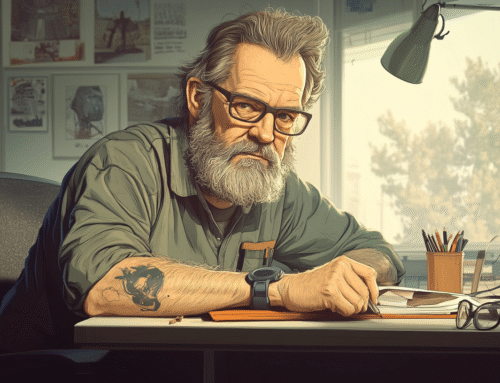In an age of distraction, noise, and algorithmic overwhelm, it’s easy for creators and solopreneurs to get stuck in small thinking. Many settle for likes instead of legacy. Tweak instead of transform. Post instead of pioneer.
But what if your work could be more than just content?
What if your ideas, systems, and tools—your GPTs, products, and coaching—could become a movement?
That’s the bold invitation inside Do Bigger Things, a beautifully designed book by Samsung’s Relúmĭno Lab. It’s not a typical business book—it’s a manifesto, a visual call to arms for people who want to live and create with deeper purpose.
And in this blog post, we’re taking its philosophy and applying it directly to your world as a digital creator, coach, consultant, or solopreneur.
💡 The Central Message: Expand Your Vision
The book’s title says it all: Do. Bigger. Things.
Not more things.
Not faster things.
Bigger things.
This is about breaking out of incrementalism. It’s about refusing to play small. It’s about turning your solo business into a platform for transformation.
If you’re creating GPTs, coaching programs, or educational content, this mindset shift changes everything. It’s not about stacking features—it’s about unlocking futures.
Here’s how.
🧭 1. Purpose First, Productivity Second
Do Bigger Things opens with a reminder: in a world obsessed with speed, true growth comes from purpose, not just productivity.
Digital creators often fall into the trap of:
-
Building tools without a mission
-
Launching funnels without meaning
-
Growing audiences without identity
But when you build around a core purpose, everything clicks into place:
-
Your brand has a voice
-
Your audience resonates deeply
-
Your systems become scalable
Creator Shift:
Before your next launch or video or product, ask:
“How does this contribute to the bigger thing I’m here to do?”
🌌 2. Clarity Is the New Currency
In the digital space, noise is the default. Clarity is the differentiator.
Do Bigger Things emphasizes the value of stripping away distractions and aligning with core intent.
For solopreneurs:
-
Your messaging must be crisp
-
Your offers must be direct
-
Your value must be obvious
This is where GPT tools, visual assets, and branded systems help. They package clarity.
Try This:
Define your brand’s Big Three:
-
The problem you solve
-
The pathway you guide people through
-
The promise they can expect
🛠 3. Tools Don’t Make the Impact—Creators Do
The book showcases Samsung’s technology not as the hero, but as the catalyst for human stories.
Apply this mindset to your GPTs, Notion templates, courses, or coaching programs.
The tool is not the product—transformation is.
Don’t just promote features like:
-
“This GPT writes hooks.”
-
“This system saves you time.”
Instead, show how:
-
A creator used it to launch a business
-
A coach gained back 10 hours a week
-
A solopreneur landed 5 new clients
Frame your tools as pathways to doing bigger things.
🧠 4. Innovation Isn’t Optional—It’s a Responsibility
One of the book’s core themes is that innovation should serve people, not just impress them.
As a solo creator, you are an innovator. You’re building systems, solutions, and ideas for an audience that needs you to think ahead.
Don’t just ride trends—define new categories:
-
Don’t copy other GPTs—combine frameworks in new ways
-
Don’t just teach content creation—create branded thought systems
-
Don’t just coach—deliver transformational experiences through productized workflows
Ask Yourself:
“What’s the bigger future I’m building for my audience?”
🧬 5. The Power of Human-Centered Design
Relúmĭno Lab is a Samsung initiative focused on helping the visually impaired see better through innovative tech. This ethos of empathetic design runs throughout the book.
Creators and solopreneurs can apply this by designing:
-
Simpler onboarding for your tools
-
Clearer journeys for your clients
-
More inclusive language in your marketing
-
Cleaner UX in your landing pages and funnels
You don’t just need to be clever. You need to be compassionate in how you serve.
🧲 6. Elevate the Everyday
One of the book’s most inspiring chapters focuses on turning ordinary moments into something extraordinary.
This is huge for solopreneurs.
A good product is helpful. A transformed product is memorable.
Try adding:
-
Beautiful visual branding to your GPTs
-
Thoughtful packaging to your bundles
-
Audio walkthroughs or personal welcome messages
-
Creator rituals that turn tools into experiences
“Make them feel something. Then they’ll remember everything.”
📣 7. Stories Make Systems Stick
Do Bigger Things is full of micro-stories—about accessibility, joy, play, and transformation. They don’t tell you what to do. They inspire you into motion.
Apply this to your business:
-
Add origin stories to your product pages
-
Share use-case stories of customers using your GPTs
-
Create narratives that reflect your audience’s journey
Stories don’t compete with systems—they strengthen them.
🔄 8. Purpose + Process = Powerful Products
Too often, creators choose between:
-
Being inspirational OR practical
-
Serving purpose OR making money
But Do Bigger Things shows you can have both.
Here’s the winning combo:
-
Purpose: Your deeper “why”
-
Process: Your scalable system or framework
-
Product: Your monetized solution (GPT, course, service)
When all three align, your offer becomes magnetic and mission-driven.
Create This Stack:
-
Why you created the product
-
The method it follows
-
The outcome it guarantees
Now you’re not just selling a product—you’re sharing a philosophy.
📶 9. Vision Needs Distribution
The best part of Do Bigger Things is its form: it’s a beautiful book. High design. High clarity. Deep emotion.
But they didn’t just make it. They launched it. Shared it. Lived it.
Creators must remember: distribution is part of creation.
That means:
-
Posting about your ideas daily
-
Building a launch system (not just a post)
-
Getting your GPTs, systems, and stories into the hands of more people
It’s not about vanity. It’s about velocity of value.
If you believe your message matters—spread it with intensity.
🌟 10. The Final Invitation: Create for Impact, Not Just Income
Income is essential. But Do Bigger Things reminds us that impact is the long game.
As a solopreneur:
-
Your tools can spark movements
-
Your brand can shift minds
-
Your systems can liberate time
-
Your message can wake people up
This is not fluff. It’s fuel.
If you’re building digital products, coaching programs, GPTs, or content ecosystems, the real question is:
“Is this helping my audience do bigger things in their life?”
If the answer is yes, then keep going—louder, bolder, clearer.
💼 Real-World Ways to “Do Bigger Things” in Your Solo Business
Here’s how to translate the spirit of the book into specific actions:
🔹 1. Build Signature Frameworks
Turn your method into a named system. (E.g., “Creator Leverage Loop,” “GPT Growth Engine,” “5P Funnel System.”)
🔹 2. Launch Visual GPT Guides
Wrap your AI tools in branded walkthroughs, templates, or creator notebooks.
🔹 3. Create Impact Bundles
Combine tools + strategy + stories into high-value, easy-to-use product bundles.
🔹 4. Turn Feedback into Fuel
Use customer results and testimonials to reframe your marketing around transformation.
🔹 5. Share the Mission
Talk about your “why” publicly. People don’t just buy what you do. They buy why you do it.
✍️ Final Thoughts: The Creator’s Bigger Thing Is Inside You
This book isn’t about Samsung. It’s about possibility.
Your work as a creator, consultant, or coach isn’t small. It’s a modern form of activism. You’re building ideas that scale. Tools that save time. Offers that move hearts and wallets.
And if you’re willing to go deeper—beyond transactions into transformation—your one-person business becomes a force.
This isn’t the time for safety.
It’s time to do bigger things.






